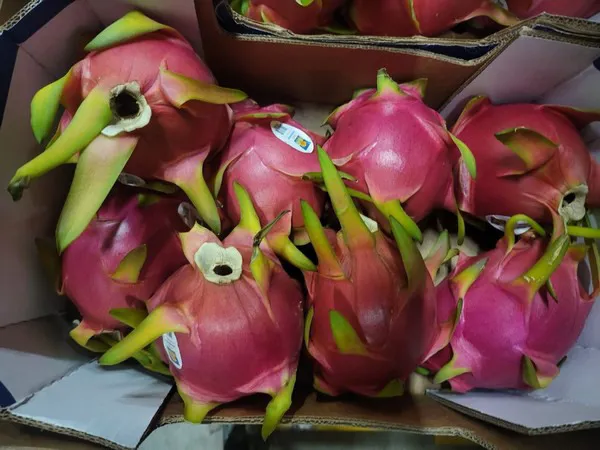Ecuador has been investing in growing its production of white dragon fruit over the past several years and this season, one shipper says all of that investing has broken the market. “We just came off a harvest that produced tremendous volumes over the past three to four weeks. It’s an unprecedented volume that’s thrown the market into a flux,” says Alan Goldberg of A&B Tropical Produce. “For the first time ever people were consigning fruit. It can’t continue because it’s going to put a lot of growers out of business.”
The item is still new to being imported to the U.S., a change that happened only in 2017 and strong demand for the fruit has spurred greater plantings in the country. “There’s been incredible demand because of the health benefits of it but the production they came up with just dwarfed the demand,” says Goldberg.
Shippers did know a sizable volume of fruit was coming given the plantings that have continued to be added in Ecuador. Last year was the first year, combined with domestic production in Florida, that A&B had dragon fruit all 12 months of the year. “Though nobody really knew what the impact would be,” says Goldberg. “We knew the volume that was coming in two weeks before it hit but then nobody knew what was going to happen to pricing because it went down to levels not seen before.” Until then, the market had been good. “So we learned that the market couldn’t handle this amount of fruit. They’re not ready for it yet,” he says.

Looking to promote more
Given the volumes, more promotions could help. “They need to make it a main item and treat it as if it’s a mango because it needs to be priced accordingly. When mangoes are in peak production, they can be three for $1. Why can’t dragon fruit be two for $3 to make it affordable for people?”
So where to now? “We’ve already had unseen before volumes in 2023 and we’re only halfway through March. We’re anxious and excited to see what they can come up with year-round. However when I say excited I mean production that can’t outweigh demand,” says Goldberg.
It’s likely, in turn, that acreage in Ecuador will be cut back. “There are growers going out of business and that’s never a good thing. Maybe it was like a gold rush down there and everyone wanted to get in on it and it wasn’t as good for people who got in late,” he says. He notes that there are trees that have been planted in the past two to three years that haven’t even come into full production yet though there are anecdotal reports that trees are already being cut down.
This could also pressure Florida’s summer production of dragon fruit which runs June-November. While production was down last year, it was the first year Florida competed directly with those increased volumes from Ecuador. “The production wasn’t great from Florida and the pricing was good,” he says, adding that Florida growers are also increasingly seeing agriculture land being sold to commercial and housing developers.
 For more information:
For more information:
Alan Goldberg
A&B Tropical Produce
+1 (305) 805-1530
alang@abtropical.com
www.abtropical.com

